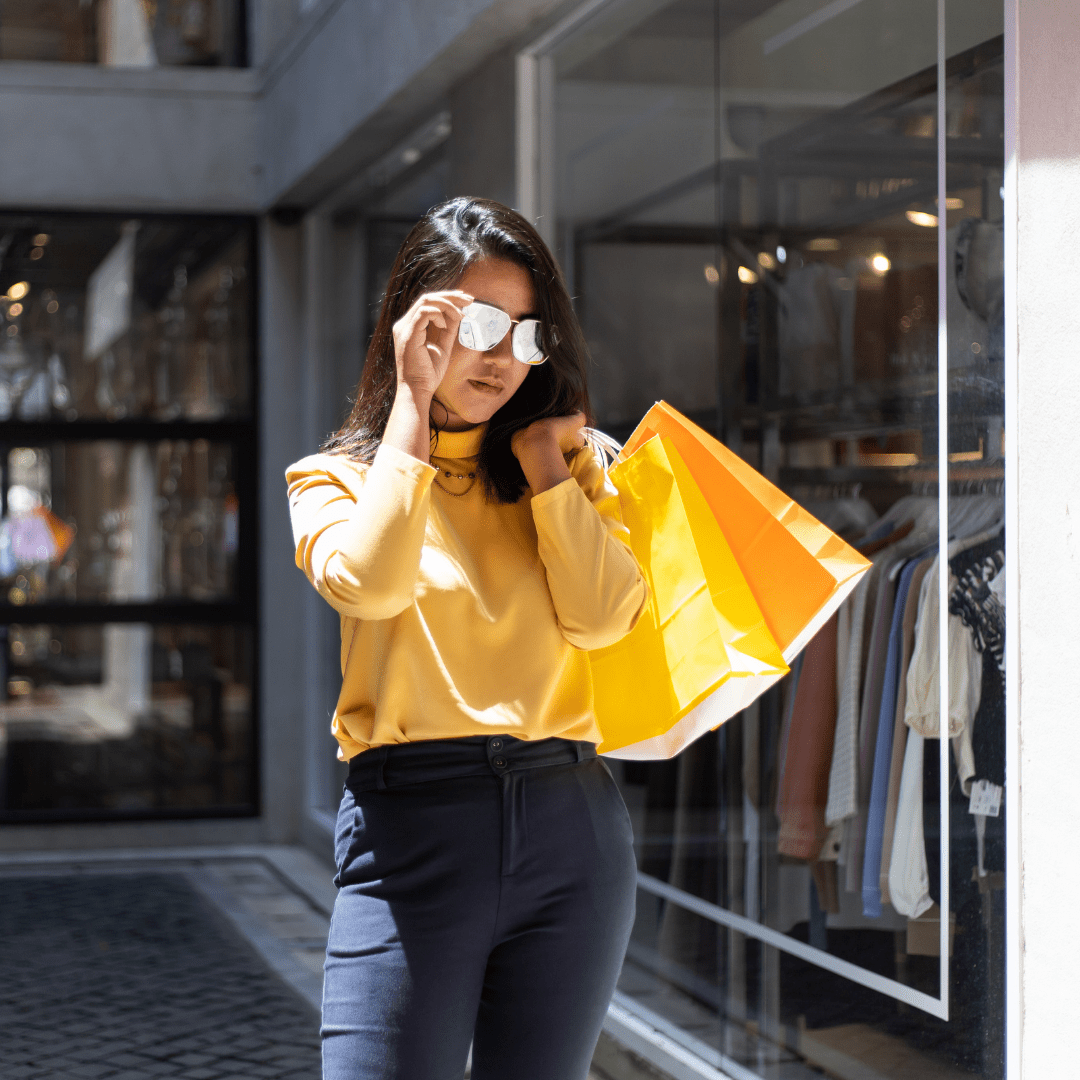How To Turn Your Online Traffic Into Foot Traffic
To turn your online traffic into foot traffic, you need to explore your USP’s and determine what your customers need that they can’t gain from your eCommerce site. Have no idea what that might be? You’ve come to the right place.


By Shannon Mugford
Does your business operate online and offline? If so, you may not know that your company is actually classed as a clicks and mortar business. Because of this, you’ll know just how important it is to drive both online traffic and foot traffic to your physical store(s).
Now that lockdown restrictions have allowed for in-person shopping to resume, businesses have a better opportunity to boost their foot-traffic to coincide with their online visitor rates. To put it into perspective, 81% of consumers in surveyed countries across the globe say they’ve discovered new brands online during COVID-19. As a result of this, businesses over several sectors have fortunately been able to grow and develop, which could have led or be leading to opening physical stores now that it’s worth it.
But the question is, how do you turn your online traffic into foot traffic? In today’s post, we’re going to show you just how simple it is to convert your influx of online customers into those who’ll visit you in-store.

Why Is It Important to Drive Foot Traffic?
Before we give you our top five tips in driving foot-traffic, let’s take a look at why this is crucial for your business. If you didn’t already know, the physical act of shopping can up your sales significantly. This can be due to several factors. One is receiving high-quality customer service in a way that online chatbots and representatives can’t always replicate.
Secondly, people enjoy physically seeing a product, especially if it’s going to be an investment. They may want to try on a piece of clothing or get a feel for the material, something that is impossible when online shopping. Even carrying a purchased item out of a store once it’s been lovingly wrapped right in front of one’s eyes delivers a certain momentum that you can’t attain on a website.
For these reasons alone, you are more likely to receive higher volume sales. Especially when upselling is already taken care of when customers decide to browse your entire store. But, how do we incentivize these customers in the first place? Don’t worry; we’ve got you. Here’s how to gain foot traffic in five simple steps:
6 Ways to Drive Foot Traffic
Before we begin, the foot traffic meaning is those who visit your physical store. In comparison, online traffic describes the users who visit your web store.
1. EFFECTIVE ADVERTISING
First and foremost, it’s all about advertising what your store has to offer. Through online ads (as ironic as that might be), effective print advertising in the form of backdrops, posters and displays and social media marketing, you can sell your in-store experience. Thus, driving foot traffic into your store.
However, there is a knack for getting this right. For instance, if you only own one store, you may want to keep your paid advertising local to this shop as those further afield are less likely to visit. This will appeal to your online customers who prefer in-store shopping. With Facebook, for instance, they have store traffic ads which are fantastic for boosting foot traffic in physical locations. They end with directions slides which also helps for location awareness.
Also, when it comes to print material, you need to keep your target customer in mind. Is a 40+ target audience going to want to see posters with graffiti-like text on them? Probably not. When designing your physical advertisements, it is crucial to keep your brand and target customer in mind.
When it comes to social media, this is one of the most prominent ways of turning online customers into in-store customers. They see an ad on your social platforms and website which showcases an offer and voila! They’re sold.
2. UNIQUE SELLING POINTS
Now that you know how you’re going to encourage foot traffic, it’s time to think about what you’re going to include in your ads. When thinking about your unique selling points, you need to ask yourself: What does your store offer that others don’t? Or what does it offer that your online store cannot? It’s all about selling your shop, but again, to your target audience.
An example of standing out from all your competition would be exclusive in-store offers and services. For example, people love a click & collect service; it’s straightforward, hassle-free and convenient. This service could be the determining factor of someone visiting you which in turn, can lead to them browsing and purchasing further items; thus, a fantastic upselling technique.
Also, with an exclusive sale or offer in store, of course your online customers are going to opt for a bargain over the original price; wouldn’t you?
3. DEFINING BEST LOCATIONS
Next up, we have the location of your shop. Ok, so this may be slightly more difficult to manipulate than, say, a poster. Still, it needs to be considered, especially if you haven’t yet opened up a physical store. To gain the most foot traffic, you need to think about your location strategically.
Where will your shop thrive? What street lacks a shop like yours? Which roads are the busiest? How many shops should you open? This last one may not be feasible at this moment in time, but always something to look into further down the road. We say this because a number of your customers online won’t necessarily be able to visit your shop due to distance, so purchasing online is their only option.
4. HOLD WORKSHOPS/CLASSES
You may consider this another unique selling point, but it’s also a fantastic way to extend your business. If you have room for an extension or have a spare room in your shop that you could utilize, why not take your services and turn them into a resource for customers? An example would be an online cocktail shop, now an in-store cocktail shop, hosting cocktail classes.
This service would act as another incentive for your customers to visit and purchase, especially if they enjoyed the products used. It’ll also encourage those who are located further afield to visit as they are given more of an experience as opposed to a 20-minute shop. At the end of the day, who doesn’t want a two in one wherever they go? A bit like a peak in the gift shop before you exit a zoo.
5. DO YOUR RESEARCH
Another tip of ours is to do your research. By assessing your customer’s buying behaviours on your eCommerce site, you can get an idea of what to offer in-store. Maybe your customers look for gifting options on your site, but gift-wrapping isn’t an option so they decide to go elsewhere for the full shabang. This is where offering this new service in-store would solve this issue.
Also, don’t forget that you can get your customers involved when doing your research. Surveys, questionnaires and polls are just three ways you can find out what they’re looking for when visiting your site. By finding out the answers, this can help you to determine what you need to do in your physical shop.
6. OFFER OUTSTANDING CUSTOMER SERVICE
Last but certainly not least, we have customer service. By having a physical shop, you can offer a certain level of assistance for your customers that they wouldn’t be able to experience online. Whether that’s through fittings, personal shopping or simply wholesome conversation that can instantly brighten someone’s day, exceptional customer service always goes a long way.
Ask your staff to offer a personalized service for everyone who enters your store. Ask the customer what they’re looking for, who they’re buying for and give them recommendations on what would best suit their needs. It’s essential to be attentive without being pushy, though, of course.
This also leads onto ensuring that your shop is prepared. For example, staff should always ensure that stock levels are adequate because if someone is thinking of visiting you in-store but once they arrive, their item is out of stock, this would then give them a bad taste in their mouth. You want to follow through with every promise that you’re making; this way, you can encourage loyalty in your customers.
Remember: Shop Awareness
While all of the above tips are crucial when driving foot traffic, they’re no use if customers aren’t aware that you have a physical store. People might easily come across your website, but then bounce off because it’s something they want to view in store. So, making sure store opening hours and your shop’s address etc. are easily located on Google and your site, is vital.
We hope that these tips for infiltrating foot traffic were helpful for you and your click and mortar business. If you want to find out what else your business can specifically do to boost foot-traffic, Google’s Grow My Store will highlight any flaws in your current strategy.
If you need assistance with driving your foot traffic, we are your people. Through social media management, design services & paid advertising, we can give both your eCommerce site and physical shop the best chances of attaining traffic. Whatever you need support with, the Soshell expert team know what to do.
By Shannon Mugford
Position
you may also like…
How the Coca-Cola Christmas Advert changed Santa for life.
How the Coca-Cola Christmas advert standardised the modern and common image of Santa.
Ridding The Measurement Myths of Google Privacy Ads
Let us rid you of the myths associated with Google Privacy Ads and the all-important but not so tasty Cookies.
How To Drive Influencer Marketing Effectiveness
The Soshell team delve into how they organised and delivered a successful influencer campaign for eCommerce jewellers Joshua James Jewellery.



